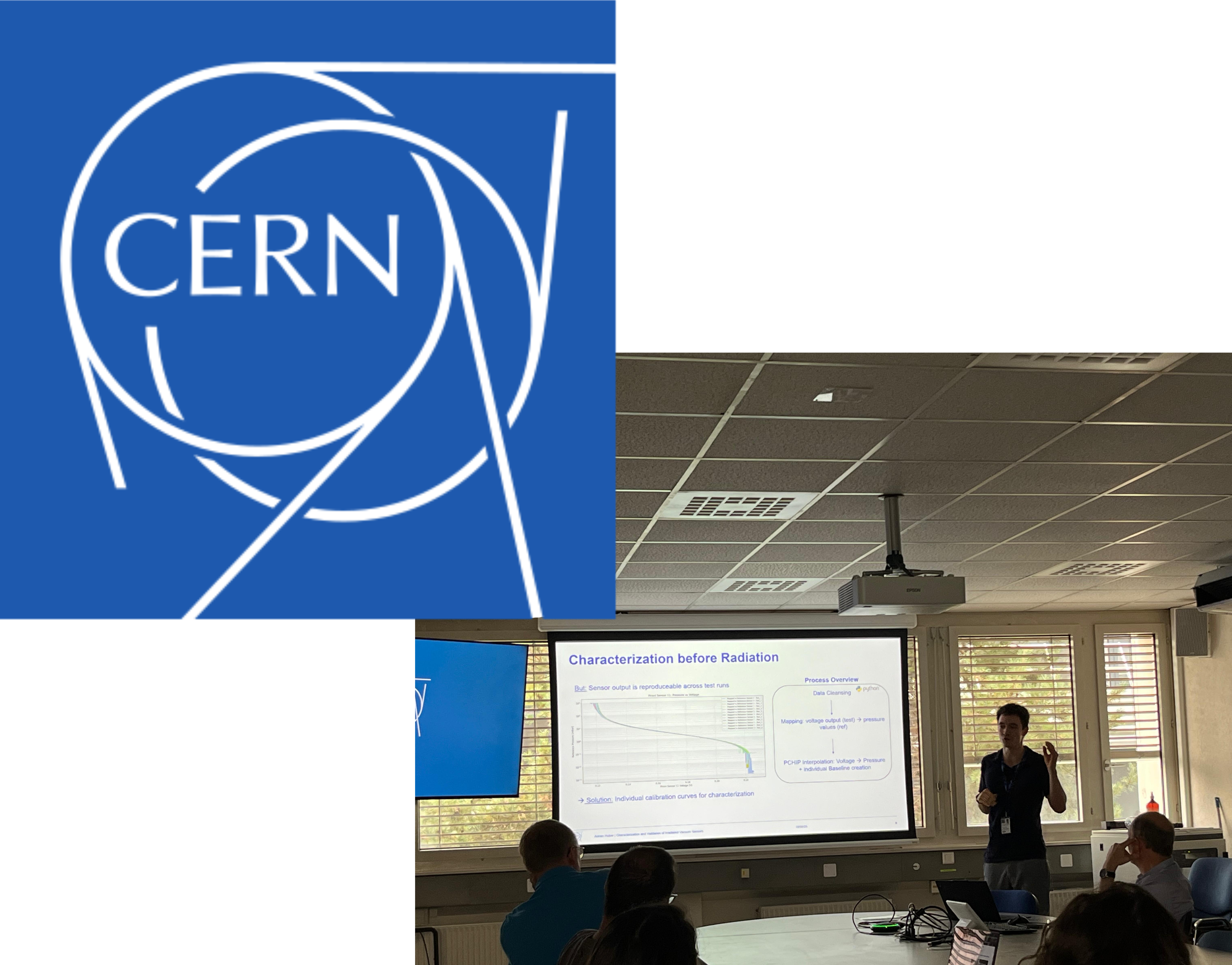Researching Irradiated Vacuum Pressure Sensors at CERN
Abstract
Investigation of radiation tolerance in cost-effective vacuum pressure sensors for use in high-radiation environments at CERN's Large Hadron Collider. Research focuses on characterizing sensor performance degradation under radiation exposure to evaluate alternatives to expensive radiation-hardened components.

Me giving a presentation about the current progress in front of the Experimental Physics Department
Brief Description
I was selected as a summer research student at CERN in Geneva, where I worked on characterizing radiation tolerance in novel vacuum pressure sensors for the LHC. Many of CERN’s vacuum systems operate within detector environments that expose sensors to significant radiation doses, particularly with the upcoming High Luminosity LHC era increasing radiation levels even further. Currently, radiation-tolerant pressure sensors cost an order of magnitude more than standard sensors, creating substantial budget constraints for large-scale installations. CERN has historically reduced costs by disassembling non-radiation-tolerant sensors and relocating the vulnerable readout electronics to shielded areas, but this approach remains labor-intensive and expensive. My project focused on evaluating a new generation of Pirani vacuum sensors that eliminate integrated readout electronics entirely and as a result is much cheaper then the alternatives. While the price reduction is dramatic, the radiation response of these sensors was unknown. Therefore, a precise characterization of the new sensors was essential. The research involved building a test setup to evaluate sensors exposed to different radiation doses, developing readout software for the measurement controller, and performing comparative analysis against reference sensors to assess accuracy, linearity, and operational range after irradiation.
Project still ongoing until 12. September 2025. Once the final report is published, I will add it here
Presentation
Halfway through my project, I had to present my current progress in front of the Experimental Physics department. Here are the slides from that talk: